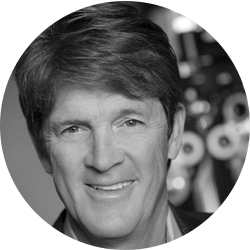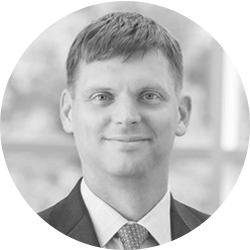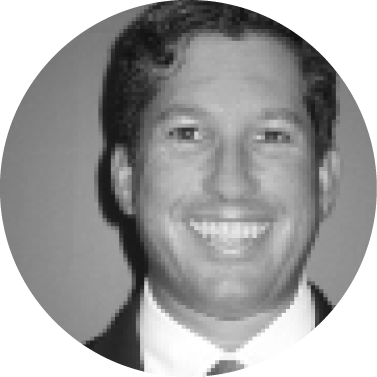
Stephen Coleman, MD
Starting in the mid 1990s, LASIK volumes were driven by highly motivated patients, generally with large prescriptions, who were willing to accept the potential risks, as they were known at the time. Our understanding of who constituted an ideal candidate was only beginning to take form, and laser profiles began to improve dramatically. These patients were part of the 78 million-strong demographic known as baby boomers, which peaked in 2001 and paralleled the high-water mark for LASIK procedures.
Honest concerns about side effects and a global economic slowdown followed. But the true basis of the past years of decline in LASIK volumes is more closely linked to the fact that we are muddling through Generation X, a small demographic numbering 46 million at best and possessing values much different from their parents.
On the horizon is Generation Y, which at 78 million rivals the baby boomers in size but with one, very distinct advantage: comfort and familiarity with technology and an inherent understanding that lasers are precise, accurate, and reproducible. With this in mind, the LASIK future is very, very bright.
Stephen Coleman, MD, is the Director of Coleman Vision in Albuquerque, New Mexico. Dr. Coleman may be reached at stephen@colemanvision.com.

Jimmy K. Lee
According to Market Scope, since peaking at 1.4 million procedures around 10 years ago, LASIK volume has dropped 50% in the United States. The reasons for a worldwide decline in refractive surgery volume have been multifactorial. One obvious reason is the economy. LASIK volumes have historically tracked consumer confidence indices (www.conference-board.org), and although some argue that the worst of the global economic recession is over, the growth of the economy continues to lag. Despite employment and personal finance reports indicating increased spendable dollars, the great recession seems to have taken a deeper psychological toll on the average consumer in that most potential patients for elective medical services are thinking twice, if at all, about these procedures, opting to save extra for a rainy day.
Another factor has been overexposure of LASIK complications by media and government agencies. There are countless online forums and websites with testimonials from dissatisfied patients, including online petitions to ban LASIK. The FDA has held hearings that have been highlighted in popular media avenues. The impact is not unique to the United Sates. The Japanese equivalent consumer affairs agency cited 80 complaints since 2009 and advised the health ministry to enact legislation in response.
Refractive surgery defined in the traditional corneal laser-based surgery sense may have declined in recent years, but the refractive surgery landscape has changed. First, there has been an explosion of new technologies, namely presbyopia- and astigmatism-correcting IOL options and femtosecond laser cataract surgery. Second, there has been a seismic shift of demographics to the older baby boomer population with cataracts. Third, the recent economic downturn has forced LASIK-only practices diversify. If refractive surgery encompassed all surgical procedures for spectacle independence, the numbers may not look so grim.
Since Medicare’s 2005 regulation on presbyopia correction and its 2007 regulation on astigmatism, the Centers for Medicare & Medicaid Services (CMS) has permitted surgeons to bill beneficiaries out of pocket for the concurrent surgical correction of presbyopia and/or astigmatism while Medicare covered cataract surgery. Per-eye fees for these “upgrades” are generally in the ballpark of laser corneal refractive surgeries. According to the Corcoran Consulting Group, these cataract procedures with upgrades account for 350,000 procedures per year, or 11% of all cataract procedures in the United States. Some believe that the technology and skillset is mature enough to offer pure refractive lens exchange surgery with these IOL options in noncaractous eyes and have carved out a substantial case-only niche in the marketplace.
From the forecast, there appear to be many intimidating challenges ahead: the uncertainty of the private-pay sector in Obamacare, keeping abreast of rapidly evolving technologies, and educating the public (potential patients) on the benefits of innovative procedures while effectively addressing complications and complaints. There have been many efforts from professional societies (American Academy of Ophthalmology [AAO], American Society of Cataract and Refractive Surgery [ASCRS]) as well as grassroots organizations such as the Refractive Surgery Alliance (RSA) that have aimed to tackle these issues from all fronts.
As trite as it may sound, there appears to be light at the end of the tunnel. The aging population continues to increase and, thanks to refractive intraocular options, they may absorb much of the decline in LASIK. Furthermore, the number of surgeons remains relatively flat. Medicare data report that 7% of surgeons perform more than 500 cataract cases per year and account for most of the 3.2 million annual cataract volume. The vast majority (93%) perform less than 500 cases per year. Thus, there will be more than enough cases for high-volume innovative surgeons who remain at the forefront of emerging technologies.
Jimmy K. Lee, MD, is the Director of Refractive Surgery at Montefiore Medical Center and and an Assistant Professor of Ophthalmology at the Albert Einstein School of Medicine in Bronx, New York. He acknowledged no financial interest in the products or companies mentioned. Dr. Lee may be reached at jimmylee@montefiore.org.

Lance Kugler, MD
It is tempting to read the headlines and conclude that all refractive surgery practices are in decline. Many practices are, in fact, thriving. Practices with updated equipment, well-trained staff, and excellent customer experience are growing year after year. Surgeons and practices offering a full range of refractive surgery services including LASIK, surface ablation, phakic IOLs, and dysfunctional lens replacement (refractive lens exchange) are outperforming centers that offer only LASIK. By focusing on patient outcomes as the top priority, such practices are establishing a value for their services. They clearly communicate the value to their patients and charge accordingly.
In contrast, practices targeting the lower end of the market are not performing as well and have accounted for the majority of the decline in reported LASIK volumes. Such centers are more sensitive to economic cycles, and, by concentrating on operational efficiency rather than surgical results and patient experience, their customer satisfaction rates tend to be lower and less likely to generate new patient referrals.
Refractive surgery is more successful and accessible than ever before. Continued growth of the refractive surgery industry is dependent on the successful communication—to prospective patients and to our colleagues who do not perform refractive surgery—of the value that refractive surgery offers. Surgeons must move past viewing each other as adversaries and realize that we must work together toward bringing high-quality refractive surgery to as many people as possible. The Refractive Surgery Alliance is an international organization of leading refractive surgeons established specifically to achieve that goal.
Lance Kugler, MD, is the CEO and Founder of Kugler Vision, PC, and serves as the Director of Refractive Surgery and an Associate Professor of Ophthalmology at the University of Nebraska Medical Center, Omaha. Dr. Kugler is the President of the Refractive Surgery Alliance. He may be reached at lkugler@kuglervision.com.

Daya Sharma, BSc(Med)(Hons)
, MBBS, MSc, FRANZCO
The laser vision correction (LVC) market contracted in Australia, as reported elsewhere. There are economic and demographic factors to explain this. For example, there are 4.4 million Gen X-ers (21% of the population), now aged between 36 and 50 years, but 57% of them live week to week. Consumer confidence has been relatively low, and housing affordability in particular is an issue. Hence, people are electing to stay in contact lenses or glasses more. The baby boomers are the demographic group with higher disposable income, and this is reflected in the growth in the multifocal IOL market (increased >40% in 2013) and the uptake in laser-assisted cataract surgery in Australia.
In my own private practice, I set out to focus on providing high-quality, surgeon-led service with a range of advanced diagnostic equipment. I perform procedures at two different laser refractive suites, depending on the clinical scenario. I consider it extremely important that patients don’t feel pressured into a procedure; not owning a laser suite facilitates pressure-free consulting. My LASIK practice is building primarily through positive word-of-mouth, including family members of happy cataract or general patients, demonstrating the importance of trust.
In my practice, uptake of laser-assisted cataract surgery has been higher than I expected. My practices are located in relatively affluent areas, and, in many cases, patients want access to the latest technology despite the additional cost. As a surgical tool, I find that the most significant benefit is a dramatic reduction in ultrasound energy and less manipulation of lens fragments; this is particularly beneficial in dense cataracts, where laser-assisted cases have a clearer cornea and better unaided vision from day 1. Early confidence in an excellent surgical result is important to patients.
In the near future, I hope and expect to see more publications regarding advanced assessment of diseased corneas, such as OCT-based corneal epithelial thickness maps in keratoconus and post-LASIK ectasia. This will help further development of therapeutic refractive surgical procedures, particularly regarding increasing the efficacy of topographic-guided surface ablation. I admire Dr. Dan Reinstein’s approach of encouraging industry to develop technology in this area, which will further improve our ability to manage rare complications and increase public confidence in refractive surgery. I expect that therapeutic refractive surgical procedures to improve vision in keratoconus will significantly increase with more publications, and I anticipate that LVC numbers will increase as the economy and consumer confidence improve.
Daya Sharma, BSc(Med)(Hons), MBBS, MSc, FRANZCO, is the Cofounder and Codirector of Eye & Laser Surgeons in Bondi Junction and Miranda in Sydney, Australia. Dr. Sharma may be reached at daya@eyeandlaser.com.au, or on Twitter @DrDayaSharma.

Mitchell Shultz, MD
I believe there are multiple factors that have influenced the decline of refractive surgery volumes both in the United States and abroad. Richard Duffey, MD,1 and David Harmon2 have presented detailed assessments of their views on this matter. The largest factor influencing refractive surgery has traditionally been consumer confidence. We have seen sharp declines occurring in 2001, 2008, and 2011 that corresponded to economic market declines and changes in lending practices from institutional banking across the board. If you ask your patients if LASIK were free would they have the procedure done, you will find a significant portion saying yes. When you tell them that it costs X dollars, that number dwindles rapidly.
Another factor has been a shift from LASIK to premium IOLs. While less than 25% of US ophthalmologists perform any laser refractive surgery, 80% of us are using premium IOLs (toric IOLs having the highest penetration). In the early days of LASIK, from 1996 to 2001, we operated on more baby boomers than anyone else (the average age of a LASIK patient was 39). That demographic of patients, having the largest disposable income, traditionally seek out the latest and greatest in technologic advancements. As intraocular technologies have improved over the past decade, refractive surgeons have expanded their horizons, continuing to cater to the boomers and offering additional premium services (IOLs and laser cataract surgery).
In addition, one cannot deny some of the negative influences related to media coverage and Internet sites devoted to LASIK complications. Despite the fact that LASIK is an excellent procedure in the right hands and on the right patients, not everyone who walks through the door is a good candidate. As surgeons, we must strive to protect our patients from the potential pitfalls of performing surgery on less-than-ideal candidates. Advanced corneal and anterior segment analysis technologies are helping us better determine in which patients LASIK should be avoided. Our awareness and management of evaporative and aqueous-deficient dry eye syndrome is helping re-expand that pool and restore patient confidence.
Finally, being a “glass half-full” ideologue, I look forward to new intracorneal technologies for presbyopia. While many patients can adapt to modified monovision or blended vision, not everyone is comfortable with the concept. Presbyopic corneal inlays offer promise to improve the range of vision that our 40- to 50-year-old patients desire, with minimal compromise to distance acuity. I believe that these technologies will likely drive refractive surgery volumes in the decade to come, but time will tell.
Mitchell Shultz, MD, is in private practice at Shultz and Chang in Northridge, California. Dr. Shultz may be reached at izapeyes@gmail.com.
1. Duffey R. US trends in refractive surgery: 2012 ISRS survey. Paper presented at: the American Academy of Ophthalmology Refractive Subspecialty Day. November 10, 2012; Chicago, IL.
2. Harmon D. The LASIK market: yesterday’s technology or poised for recovery. Cataract & Refractive Surgery Today, August 2011.





